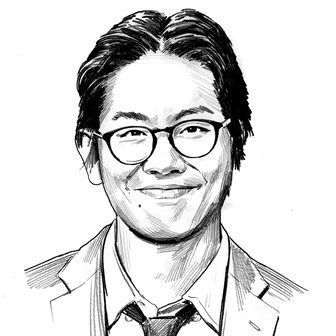
“Sometimes a fact in somebody’s mind may or may not be a fact in somebody else’s.” If there ever was an idea that more effectively captures America in the present moment, I’d be damned to find it. But as the second season of APM Reports’ excellent investigative podcast In the Dark shows us, the idea has infected the country’s legal system for a long time.
After tackling the not-so-cold case of Jacob Wetterling’s 1989 disappearance in its first season, In the Dark season two shifts its attention toward a case that remains very much active: the plight of Curtis Flowers, a black man accused of murdering four people in Winona, Mississippi, in 1996. In the years since, Flowers has been tried six times by the same district attorney, a white man named Doug Evans. The first five trials were either thrown out or ended in a hung jury. The sixth, which took place in 2010, resulted in a conviction, but it is currently being appealed by Flowers’s attorney. All six were rocked by conflicts over racial bias in the jury, and all were tainted by the specter of dubious tactics, or worse, tactics perpetrated by Evans himself. As the appeal process goes on, Flowers remains in prison, where he has been incarcerated for the last two decades.
There’s a moment that truly unlocks the season, one that left me wanting to lie face-down in the corner and not move for days. It happens late in the third episode, “The Gun,” while host Madeleine Baran and her team look into an alleged murder weapon that was foundational to the case against Flowers. During the 2010 trial, Baran explains, court-appointed forensic expert David Balash had tied a bullet from the gun to Flowers, and he had seemingly done so without an inch of doubt. This, despite the fact that Balash’s expertise is largely premised on little more than a “I know it when I see it” methodology. “When I identify it, that means I am a 100 percent certain that these were fired from one gun and no other gun from the face of the Earth,” he testified.
When Baran assesses that claim with Alicia Carriquiry, the director of an independent research group that develops statistical and scientific foundations for forensic disciplines, it is rightfully met with incredulity. “First of all, there is no such thing as one hundred percent certainty anywhere,” Carriquiry says, picking apart the obvious silliness of Balash’s statement. “And second of all, even most firearms examiners today will agree that saying to the exclusion of any other gun in the universe is insanity.”
Insanity, indeed. And yet, Balash does not back down. “I am 100 percent certain that these bullets were fired from one gun,” he tells Baran, after she gets him on the phone later in the episode. She presses him, arguing that opinions should be based on facts. That’s when he dismissively replies, “Sometimes a fact in somebody’s mind may or may not be a fact in somebody else’s.” It’s an unbelievable moment — disorienting, horrifying, and surreal — in an already unbelievable case.
With the quiet precision of a scalpel, In the Dark is the very best version of the flowering crime-podcast genre. Its focus is deep, but its scope is vast. Its process is judicious, disciplined, rigorous. It is the polar opposite of salacious. Many podcasts dealing with crime and justice often squeeze a lot of juice asking “did he do it?” or wretchedly fixating on the lurid details of the crime itself, myopically undermining any broader value that such a project could provide. In the Dark is not governed by such reductive obsessions. Instead, Baran’s team keeps the bigger picture in play by pursuing the more insidious thread: If District Attorney Doug Evans’s story does not make sense, why has he persisted in court for decades? Why has Curtis Flowers been tried six times for the same crime? In that pursuit, In the Dark does something that is unnaturally bold in this day and age: It commits to reality.
Following from that commitment, the season is structured as a systematic prosecution of Evans’s prosecution, with each episode chipping away at a different component of the case against Flowers: the theories, the prime witness, the narrative, the juries, and the district attorney himself. The generic analogy to describe the investigative process here is of an onion being peeled. Personally, I’ve come to see it more as a terrifying vivisection of a body that is unnaturally kept alive. That seems more in keeping with the nightmarish image that In the Dark vividly paints of the American justice system.
It goes without saying that the plight of Curtis Flowers is a specific instance of a broader systemic failure that rots American society. But the unsettling specificities of his struggle also amount to an eerie illustration of how the systems that make up society often feel mechanical, unthinking, and completely devoid of meaning — like it’s all some sort of hollow theater where everybody is forced to stick to a script, even when that script ceases to make sense within the context of who’s thrust onstage, and it becomes progressively less clear what the performance is trying to say. When Baran and her team push against the way the legal system has treated Flowers, thus calling into question the foundational logic of that treatment, one gets the sense of a system pushing back to justify itself. We didn’t screw this up, it’s shouting back. We’re just seeing different things here. It’s structural gaslighting of a kind.
Near the end of the seventh episode, “The Trials of Curtis Flowers,” Baran talks to Oliver Diaz, the former presiding justice of the Mississippi Supreme Court, in an attempt to understand how a representative of the American legal system views the Flowers case. Diaz argues that, despite everything that’s happened to Flowers, his case is still an example of the courts working the way they should. After all, every time he was convicted, the ruling was overturned. Nevertheless, Baran points out, Flowers is still in prison despite not being convicted as long as Evans continues to bring him back to trial. “There is a distinction,” Diaz replies. “While his specific physical situation might not change much, his status as a convicted felon versus his status as an incarcerated person awaiting trial … there is a big distinction.” Again, it’s a surreal logic, but it’s one that Diaz grounds within a broader thesis: We need to have faith that the justice system works, and despite its incredible oddities, the Flowers case remains an example of that.
“Why is it important to have faith in the system?” Baran asks. “If we don’t have faith in the system, then we’re not a society,” Diaz replies. He states it as a fact, a truth in his mind that we need to accept for society to continue. Perhaps. But sometimes a fact in somebody’s mind may well not be a fact in somebody else’s.


